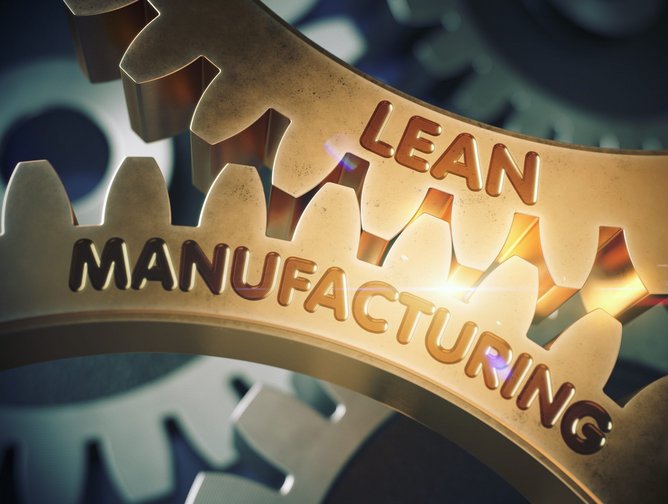Top 10 solutions for supply chain disruption

In today's interconnected and globalised business landscape, supply chain disruptions can have far-reaching consequences on organisations of all sizes. From natural disasters and geopolitical events to technological failures and unexpected demand fluctuations, supply chain disruptions can disrupt operations, cause financial losses and damage customer relationships.
In this article, we will explore our Top 10 solutions for managing supply chain disruptions. By implementing these solutions, businesses can enhance their ability to navigate unexpected challenges, maintain operational continuity and safeguard their supply chains for sustained success.
10: Establish business continuity plans
Developing a robust business continuity plan is important for manufacturers to ensure the smooth operation of their business during unforeseen disruptions.
Conduct a comprehensive risk assessment to identify potential threats and disruptions that could impact your manufacturing operations and perform a business impact analysis to understand the potential consequences of different disruptions on your operations. Finally, establish clear communication channels and procedures for notifying employees, stakeholders and customers during a disruption.
9: Utilise technology solutions
In the past few years, new technologies have been developed to help manufacturers manage supply chain crises.
AI and Machine Learning algorithms can optimise production planning, demand forecasting, quality control and predictive maintenance, while automation and robotics technologies can streamline manufacturing processes. IoT devices can collect real-time data from machines, equipment and products, allowing manufacturers to monitor production processes and track inventory. In addition, cloud computing platforms help manufacturers collaborate with partners and access new resources.

8. Implement lean manufacturing principles
The principles of lean manufacturing can streamline operations and reduce waste, which improves responsiveness to supply chain disruptions.
In order to reduce supply chain disruption with lean manufacturing, manufacturers can start by mapping the entire value stream of their manufacturing process to identify the flow of materials. This visual representation helps identify areas of waste and opportunities for improvement. Lean manufacturing is used by manufacturers such as Intel, John Deere, Nike and Toyota, which also increases their sustainability credentials.
7. Improve communication with stakeholders
Maintaining open lines of communication with key stakeholders, from suppliers to customers and logistics providers is essential in a crisis. Effective communication can help address disruptions promptly and maintain positive relations when things go back to normal, or ‘the new normal’.
Identify the key stakeholders relevant to your manufacturing operations and make sure you understand their specific needs. In all seasons of business, ensure that communication with stakeholders is clear, concise and consistent.

6. Invest in risk management
Many in manufacturing would rather be stuck on an oil tanker in the Suez Canal than look at their risk management files - but some thrive off the excitement of this task, the unpredictability and the challenge.
Develop a robust risk management strategy that assesses potential risks and potential impact on the supply chain. Identify critical areas of vulnerability and develop plans to mitigate those risks and be sure to invest in suitable technology which can support risk management efforts.
5: Enhance demand forecasting
Improve your demand forecasting capabilities to better anticipate customer needs. Accurate forecasting can help optimise inventory levels and prevent supply chain disruptions caused by demand fluctuations. Historical data analysis can identify patterns which can reflect similar market conditions.
Manufacturers should also collaborate closely with suppliers and partners to share demand forecasts, market insights and production plans. This collaboration can help align demand and supply across the entire value chain, reducing uncertainties and improving forecasting accuracy.

4: Develop contingency plans
Create contingency plans for potential disruptions, such as natural disasters (the recent earthquake in Turkey impacted its vehicle manufacturing, which totals 15.2% of the country’s total exports), political instability (Russia’s invasion of Ukraine has impacted the exportation of grain to the Middle East) or transportation issues (the Suez Canal blockage lasted for six days and held up to USD$10bn a day). Having predefined alternative routes, backup suppliers or production facilities can help minimise disruptions.
3: Implement supply chain visibility
Manufacturers should invest in systems that provide real-time visibility into your supply chain, which can help identify potential disruptions early and allow for proactive measures.
Various sources include (suppliers, production systems, warehouses, logistics providers and customer systems) and technologies such as application programming interfaces (APIs), data integration platforms and cloud-based solutions can facilitate seamless data flow.
Collaboration platforms to ensure real-time information sharing will also need secure portals, shared databases, or cloud-based platforms to ensure data accessibility while maintaining security.

2: Build strong supplier relationships
Nothing tests a relationship like a crisis - so establish and maintain strong relationships with your suppliers from the onset. Open lines of communication and celebrate collaboration wherever possible to help address and mitigate disruptions more effectively.
Maintain transpareIn chaotic times, honesty and transparency are appreciated, so ensure you clearly articulate your expectations, requirements and any changes. Promptly address any issues that arise and actively seek feedback.
“We like people who are honest. Honest in argument, honest with clients, honest with suppliers, honest with the company – and above all, honest with consumers,” said advertising tycoon David Ogilvy.
Establish a foundation of trust and respect in your interactions with suppliers. Honour agreements, contracts and payment terms. Demonstrate fairness in negotiations and cultivate a collaborative approach to problem-solving and be sure to regularly assess supplier performance based on agreed-upon metrics and key performance indicators (KPIs).
1: Diversify suppliers
Relying on one supplier is risky - and in 2023, it is totally unnecessary. Diversifying your suppliers can reduce the impact of disruptions if you can quickly switch to a different supplier.
For manufacturers concerned about geopolitical instability from China, they can also look into multi-shoring, which refers to sourcing items and other resources from China and one additional country, such as India. This is also known as the “China Plus One” strategy.
Begin by identifying the suppliers that play a crucial role in your supply chain and find out where their global bases are. If one is suddenly out of action, another one might be able to take over.
Evaluate potential new suppliers based on their capabilities and pricing, capacity, as well as their potential to meet your requirements. Consider factors such as their financial stability, track record and their ethical standards.






